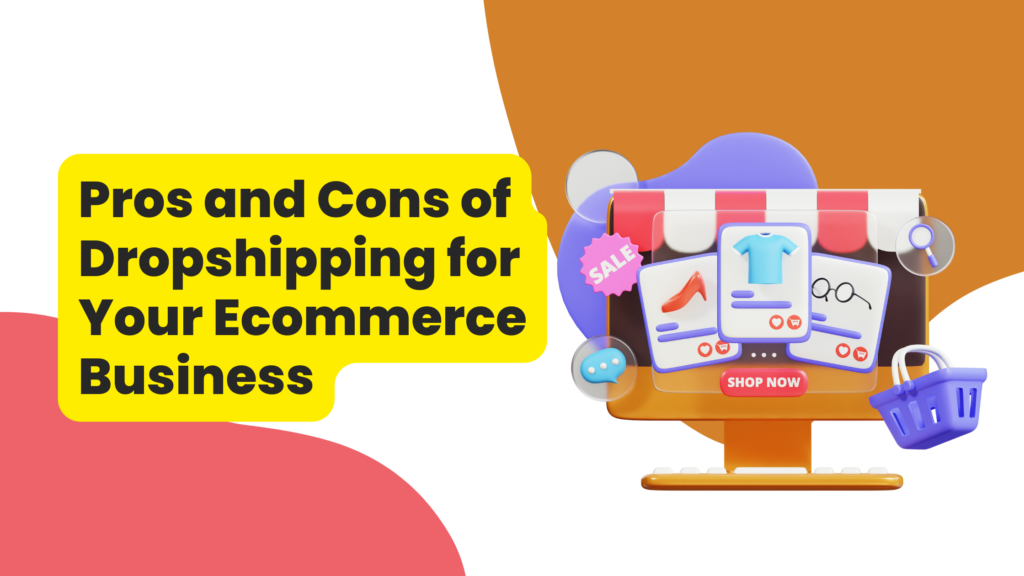Pros and Cons of Dropshipping for Your Ecommerce Business
In the world of ecommerce, dropshipping has emerged as a compelling business model, captivating the attention of entrepreneurs and aspiring business owners alike. This approach, characterized by outsourcing inventory management and fulfillment to third-party suppliers, offers a myriad of advantages, including reduced upfront costs, streamlined operations, and enhanced flexibility. However, it is crucial to recognize that dropshipping also presents challenges that demand careful consideration.
Dropshipping has become a popular order fulfillment method for ecommerce businesses. It allows retailers to sell products without the need to keep inventory in stock. Instead, the retailer passes on the sales order to a third-party supplier who then ships the product directly to the customer. While dropshipping offers several advantages, it’s important to consider the drawbacks and challenges as well.
Understanding the pros and cons of dropshipping is essential for making informed decisions about the suitability of this business model for your ecommerce venture. By carefully weighing the advantages and disadvantages, you can determine whether dropshipping aligns with your business objectives and risk tolerance.
The Pros and Cons of Dropshipping
Dropshipping alleviates the financial burden of storing and shipping products, enabling businesses to operate with minimal capital investment. This translates into lower overhead costs and a quicker path to profitability. Dropshipping often necessitates lower profit margins due to the involvement of intermediaries. Businesses may face reduced control over product quality and delivery times, as they rely on third-party suppliers.
The Pros
1. Low Overhead Costs
One of the biggest advantages of dropshipping is the low overhead costs involved. Since you don’t have to manage or store your own inventory, you can save on expenses such as warehousing, storage, and fulfillment. This allows you to focus your financial resources on other aspects of your business, such as marketing and customer acquisition.
2. Wide Product Offering
Dropshipping gives you the flexibility to offer a wide range of products to your customers without the need to invest in inventory upfront. You can easily add new products to your store and test different markets and niches. This allows you to adapt to changing trends and customer demands quickly.
3. Minimizes Risk
By using the dropshipping model, you can minimize the risk associated with investing in inventory. Instead of purchasing products upfront and risking potential overstocking or slow-moving inventory, you can test the market demand for a product before committing to a large inventory order. This helps reduce the financial risk and allows you to make data-driven decisions based on actual sales.
4. Scalability
Dropshipping allows you to scale your business quickly and easily. As your sales volume increases, you can rely on your suppliers to handle the fulfillment process, allowing you to focus on growing your customer base and expanding your product offering. This scalability is particularly beneficial for businesses experiencing rapid growth or seasonal fluctuations in demand.
5. Location Flexibility
With dropshipping, you are not tied to a specific location for your business operations. As long as you have an internet connection, you can manage your store from anywhere in the world. This flexibility gives you the opportunity to run your business remotely or even target international markets without the need for physical presence or warehousing in those locations.
The Cons
1. Low Profit Margins
While dropshipping offers low overhead costs, it also comes with low-profit margins. Since you are not purchasing products in bulk from manufacturers or wholesalers, you may not have the same buying power or discounts. This means that your profit margin will be lower compared to retailers who buy in bulk and store their inventory. You may need to sell a higher volume of products to achieve the same level of profitability.
2. Intense Competition
The dropshipping market is highly competitive, especially in popular niches. With low barriers to entry, many entrepreneurs are attracted to the dropshipping model, resulting in a saturated market. Price competition can be fierce, and it can be challenging to differentiate your brand and products from competitors. Established competitors with larger budgets and more experience may have an advantage in terms of pricing and customer acquisition.
3. Lack of Control Over Supply Chain
When you rely on dropshipping, you have limited control over the supply chain. You are dependent on your suppliers for product quality, fulfillment speed, and return policies. If any issues arise, such as delays or product defects, it can be challenging to address them directly with your customers. Communication delays between the customer, dropshipper, and supplier can lead to customer dissatisfaction and potential damage to your brand reputation.
4. Legal Liability Issues
As a dropshipper, you are responsible for the products you sell, even if they are sourced from third-party suppliers. It’s crucial to ensure that your suppliers are legitimate and comply with legal requirements. If your supplier sells counterfeit or trademarked products without permission, it can lead to legal issues and damage your business reputation. Having a solid Dropshipping Agreement Contract in place can help protect you from such situations.
5. Difficulty in Building a Brand
Dropshipping makes it challenging to build a strong brand identity or design a branded e-commerce store to run the business. Since you are selling products that are not exclusive to your store, customers may focus more on the product’s brand rather than your own. Building brand loyalty becomes difficult when customers can easily find the same products from competitors at lower prices. Dropshipping is better suited for already-established brands looking to expand their product offerings rather than new businesses trying to establish their presence.
Conclusion
Dropshipping offers several advantages, such as low overhead costs, wide product offerings, scalability, and location flexibility. It can be a valuable tactic for ecommerce businesses to test new products, minimize risk, and expand their reach.
However, it’s essential to consider the challenges, including low-profit margins, intense competition, lack of control over the supply chain, legal liability issues, and difficulty in building a brand. By understanding the pros and cons of dropshipping, you can make an informed decision on whether it is the right fulfillment method for your ecommerce business.
Remember, dropshipping is not a get-rich-quick scheme, and success requires careful planning, effective marketing strategies, and strong customer support. By leveraging its benefits while mitigating the challenges, dropshipping can be a valuable tool in growing your ecommerce business.



